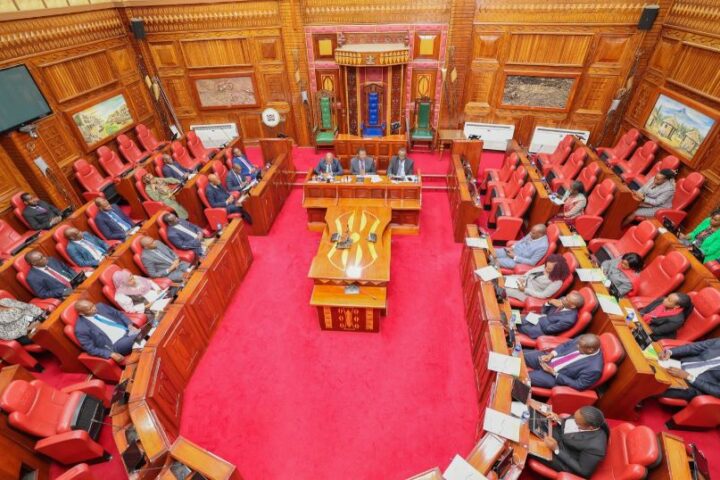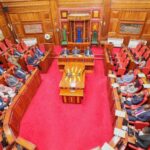
The unga crisis was a favourite topic for the opposition, and Kenyans continued to accuse the government of doing nothing.
Then on Tuesday, Agriculture CS Willy Bett announced a new plan to subsidize unga to Sh90 per 2kg bag. 1 kg bag will cost Sh47.
Read: Abrupt End for ‘Unga Revolution’ as Government Subsidizes Flour to Sh90
This new unga will still be the same brands we’re used to, but will have a ‘GOK’ sticker indicating the subsidized price.
For the best part, this move was received well by most Kenyans. However, like in every situation, you cant please everyone.
Several individuals have taken to various social media to castigate the government for wasting tax payers’ money in this way. Among certain circles, there seems to be general consensus that this is another plot to steal from Kenyans, with the money most likely headed to finance campaigns.
Here’s one such post by Facebook user Jimmy Mutunga.
**************************************
This is what I think about the subsidy!
Let me explain in brief the implication of the maize subsidy. Today, a 2kg pack of maize floor goes for about Kshs. 150. The Millers plan to sell the same packet at Kshs. 90 after the subsidy. What this means is that the government shall pay Kshs.60 to local millers for every 2Kgs pack of Unga bought and consumed by any Kenyan household. Where will the Kshs. 60 per 2kg packet come from?. Of course, from taxes or borrowing. Since the subsidy was not in the previous budget the easy route, therefore, is borrowing. That aside, let’s do the math. According to KNBS statistics, Kenya had about 8,767,954 households as of 2009.
The figure may have gone up or down due to migration patterns and demographics. By household, I mean people who share an income. On average, each household consumes about 1/2kg of Unga on a daily basis given Ugali is the staple food. It is not lost in my mind that on certain days Kenyans may switch diets, consume more or less than half a kilo or go hungry. However, half a kilo is a working figure. In short, what I mean is that Kenyan households consume 4,383,977kgs (8,767,954 multiplied by 1/2kg) of Unga on a daily basis. In retrospect, the government shall be paying private millers (4,383,977kgs*15) Kshs. 65,759,655 or (65Million) per day to sustain the subsidy. Deputy president says that the subsidy shall run from today until September, those are about 104days, (65,759,655 Kshs*104) multiply that with the cost of the subsidy per day Kshs. 6,839,004,120 (6.8Billion). In short, 6.8 Billion is what will go into the pockets of the private millers for creating the artificial shortage. Gullible Kenyans are out there celebrating while enriching private individuals with their taxes.
[showad block=6]
This money will end in campaigns for either of the top political parties as a token for successful business dealings. Besides, it has to be noted that subsidies cause market distortions and after September once the government withdraws the subsidy prices will shoot back in place unless we have a bumper harvest. The implication is that we are simply killing local farmers in Transzoia and opening frontiers for smuggling of cheap maize to compete with the subsidized maize. Moreover, The timing is also ripe because Jubilee thinks it will be in power by September to continue milking Kenyans dry. The future implication of the subsidy plus the money that shall be pumped into the election campaign is more inflation. Prepare to buy Unga at Kshs. 200 per 2Kgs packet after September.
****************************************
There’s quite a lot of alternative facts in that post. For instance, I doubt Kenyan households consume 1/2 kg of unga daily. From estimates off the top of my head, I would say ugali is eaten at most 3 times a week.
The other alternative fact is the cost of subsidy. The government is not paying Sh60 for every packet. It is subsidizing the cost of a 90kg bag Sh2300. When economies of scale and other things are factored in, I believe that figure is lower.
All in all, it is still unclear how long the government will sustain this programme, and where this new money will come from. But middle class and rich folks on Twitter should understand they are the only ones complaining.






